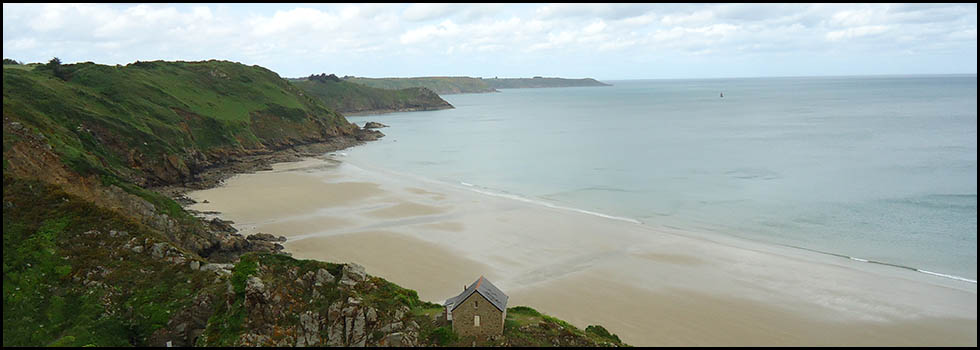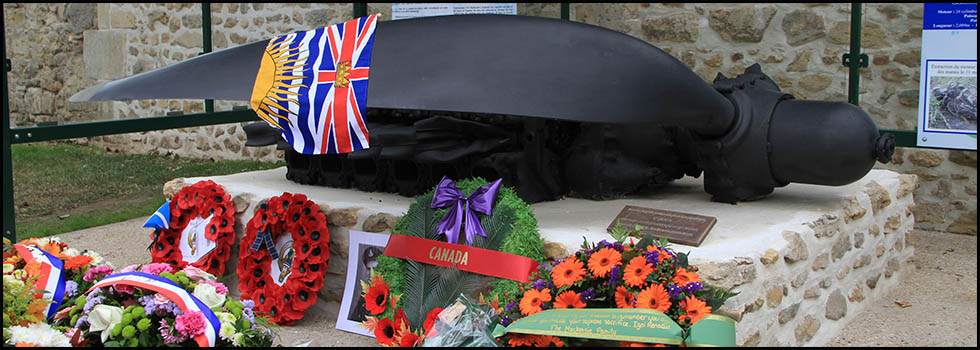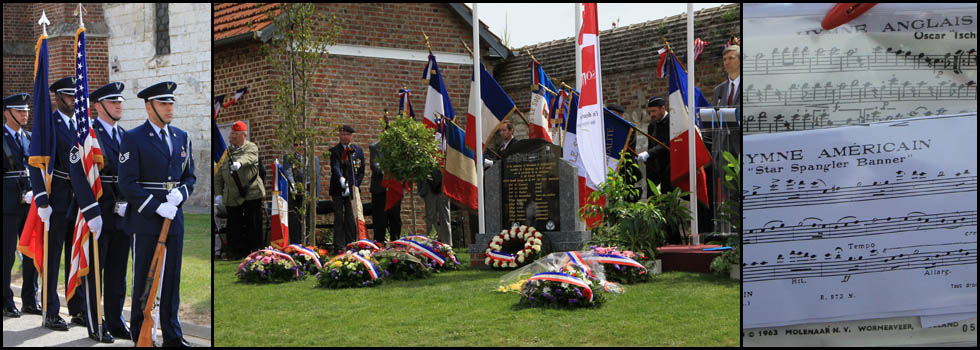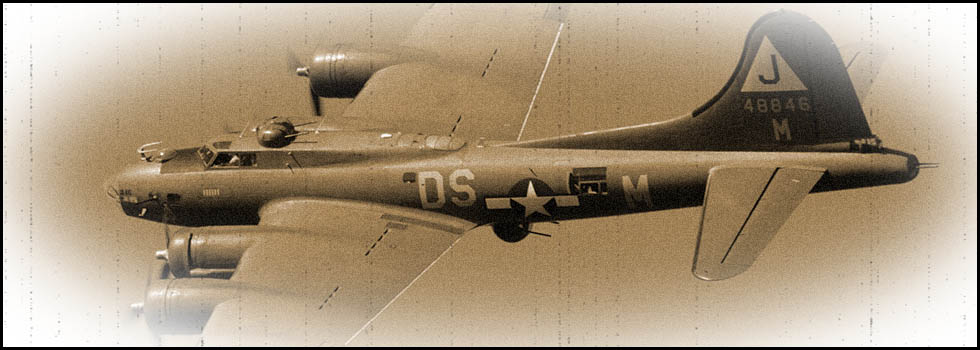410th Bomb Group
647th Bomb Squadron
9th Air Force
Caix (Somme)
En français
Warren A. Thompson was born on 20th June 1924 near Savona, NY.
He enlisted in the Army on 25th September 1942, at the age of 18, and opted to serve in the U.S. Army Air Force as a bomber pilot.
He was promoted to 2nd Lieutenant on 30th August 1943.
After several months training in the United States, his unit, the 410th Bomb Group of the 9th Air Force, was deployed to England in April 1944 and was stationed on the base at Gosfield, Essex.
This unit was equipped with Douglas A-20 "Havoc" aircraft, which were twin-engined light bombers having three crew. Warren A. Thompson was the pilot.
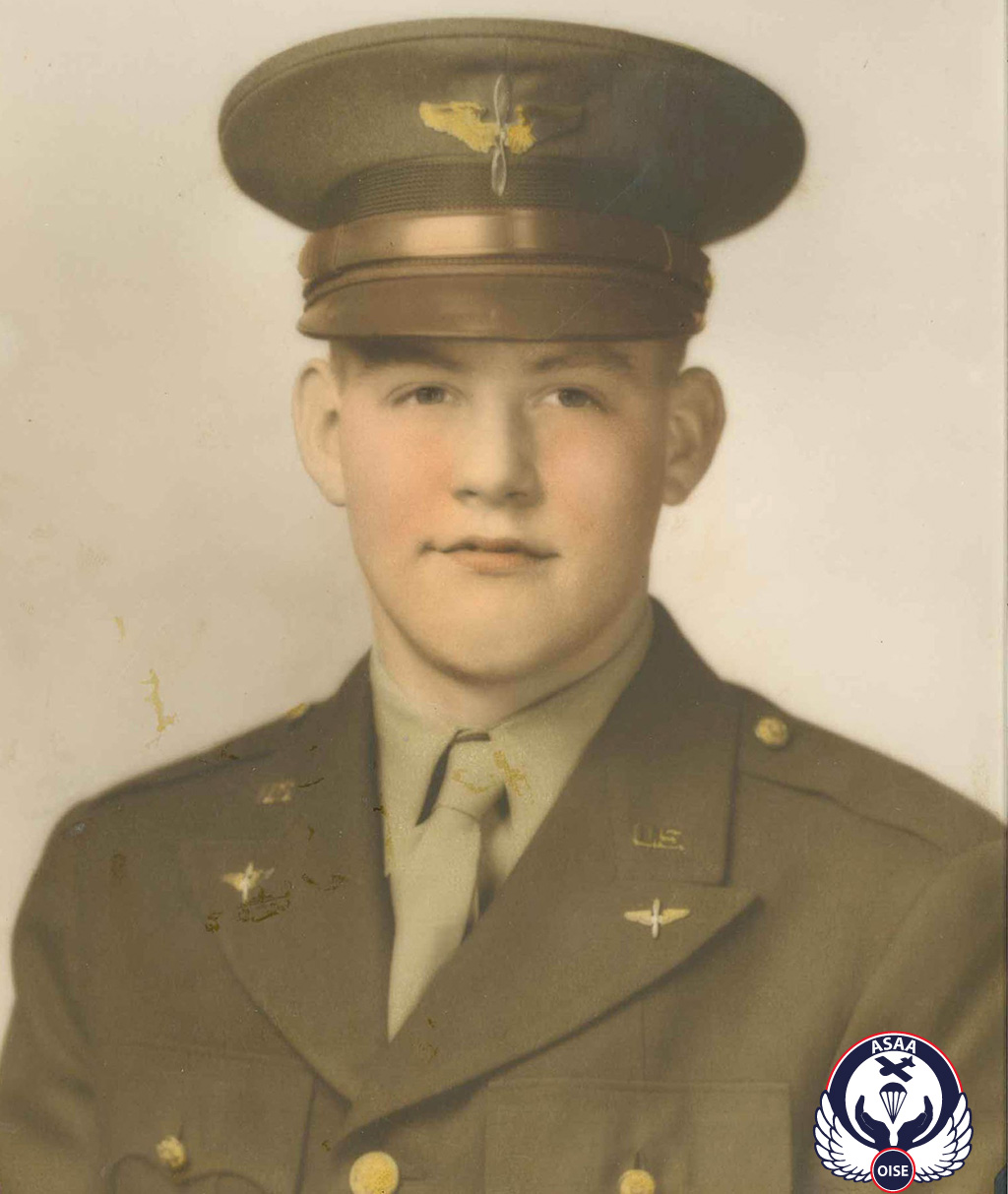
The crew :
| 2nd Lt. Warren A. THOMPSON | Pilot | 19 | Evaded and POW | Savona, New York |
| S/Sgt. George W. JONES | Armorer-gunner | 24 | Evaded | Tipp City, Ohio |
| Sgt. Martin J. TOURBIER | Mechanic-gunner | 27 | Evaded | Watertown, Wisconsin |
On 27th May 1944, 2nd Lt. Warren A. Thompson flew on his first mission
The 410th Bomb Group flew off at around 9:00 pm to bomb the railway yards at Amiens. Divided into two "Box" formations, a total of 27 aircraft arrived over the target. On the ground, 88 mm anti-aircraft guns opened fire. Maintaining their flight line despite bursts of flak shells, the American bombers, bomb bays open, dropped their bombs on the target from an altitude of 12,000 ft.
The bombing ended, it was time for the formations to return to England but to the east of Amiens, a battery of Flak guns recommenced firing at the bombers.
Lt. Thompson's aircraft was hit. The pilot was forced to leave the formation. The left engine was on fire, letting out a long plume of smoke.
The two gunners, Sergeants George W. Jones and Martin J. Tourbier, bailed out. Then it was the turn of the pilot Thompson to get out of his cockpit.
Moments later, the abandoned aircraft broke in two in the air and then plunged to the ground. In flames, the biggest part of the Havoc came crashing down in the heart of the village of Caix (Somme).
Having landed near Bayonvillers, S/Sgt George W. Jones was rescued and hidden by the Henry family at Harbonnières until the Liberation.
Sgt. Martin J. Tourbier was first rescued at Guillaucourt before being hidden in the farm of the Varengot family at Ignaucourt. He was then taken to the home of the Wadier family at Arvillers.
Like his crewmate Jones, Martin J. Tourbier remained hidden in the Somme until the Liberation.
After landing, 2nd Lt. Thompson remained hidden in a field overnight. He was assisted by residents who provided him with civilian clothes. After a few days, accompanied by a guide, 2nd Lt. Thompson went to Montdidier station, hoping to catch a train to Paris. The station was full of German soldiers. Suddenly, American fighters appeared, targeting the station. There was panic and everyone tried to reach shelters. In one of them, located under the station building, 2nd Lt. Thompson hid among German troops. After the attack and in the general confusion, he could not find his guide again. So he decided to leave the city.
After a few hours, he was collected in the farm of the Bauduin family at Welles-Pérennes (Oise). Two days later, Count Jacques de Baynast picked him up at night and took him to his home, to the Chateau de La Borde. He remained hidden in the castle for about a month and a half. During his stay, he was provided with a false identity card in the name of Roland Fontaine.
In mid-July 1944, fearing a raid by the Germans (they learned that their name circulated in the offices of the Gestapo), Jacques de Baynast and his wife Colette decide to move the airman. So Robert Moulet took him to Mrs Suzanne Cauvel, a teacher in Mesnil St-Firmin (Oise), who lived at the school.
The next day, certainly denounced by an individual seeking reward, 2nd Lt. Thompson was taken prisoner by the Germans. Warned in time, Suzanne Cauvel narrowly escaped arrest.
Warren A. Thompson was taken to the Gestapo Headquarters at Montdidier and then to the Citadel of Amiens, where he was locked in a cell for a week.
He was then transferred to the Fresnes prison. On 15th August 1944, among more than 2,000 prisoners, he embarked at Pantin station on a train to the concentration camp of Buchenwald. There he spent about two months in appalling conditions.
At the beginning of December 1944, following the intervention of authorities of the Luftwaffe, 2nd Lt. Thompson and his airmen comrades were transferred to Stalag Luft III, in present-day Poland.
Before the arrival of the advancing Soviet troops, the camp was evacuated in late January 1945.
Warren A. Thompson was finally released by the U.S. Army in May 1945 in the Nuremberg region.
After his return to the United States, Warren A. Thompson continued to serve in the Army Air Force until March 1950.
He then returned to live in his family farm near Savona, NY, where he still resides today.
In November 2012, Lt. Thompson came back for the first time to our region for a visit filled with emotion.

